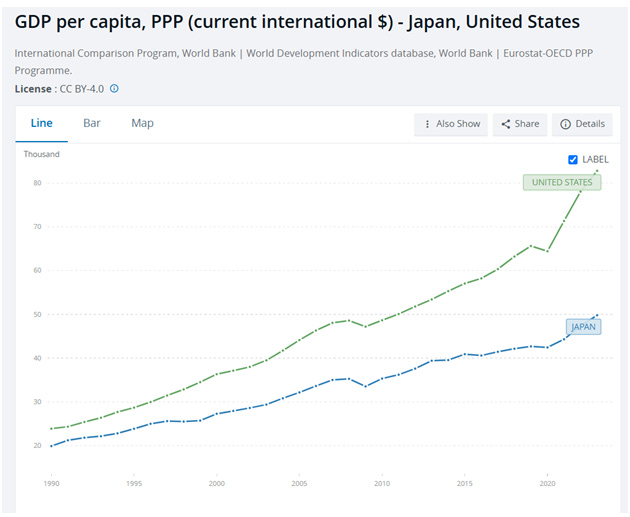Trade War with China Looks Like the 1980s Trade War with Japan
With President Trump’s Treasury Secretary Bessent and Trade Negotiator Greer meet in Switzerland with China Economic Minister He Lifeng to hash out a Trade War settlement, it is useful to look back at President Reagan’s Plaza Accord negotiations that ended the Japan Trade War in 1985 and kicked off a huge U.S. economic boom.
President Clinton naïvely claimed in 2000 that giving China World Trade Organization (WTO) “most favored nation” status to remove U.S. tariffs, would change China:
“Economically, this agreement is the equivalent of a one-way street. It requires China to open its markets — with a fifth of the world's population, potentially the biggest markets in the world — to both our products and services in unprecedented new ways. All we do is to agree to maintain the present access which China enjoys.”
As revealed below, China over the next 25-years gained 100 million jobs and its GDP per capita vaulted 13.7 times. The real change was U.S. manufacturing jobs to falling from 16 to less than 13 million, and U.S. GDP per capita rose by only 2.5 times:
Economists that claimed in 2000 that globalized Free Trade with China would be good for Americans, such as MIT’s David Autor, Harvard’s Gordon Hanson, and Brookings Institution’s Ryan Hass and Abraham Denmark, are now screeching that negative impacts from Trump’s “China Shock”tariffs will somehow cost American jobs.
With Japan’s autos, televisions, washing machines, and consumer electronics were flooding into the U.S. causing forcing American auto makers to close factories and even putting U.S. companies like Zenith out of business, President Reagan in the 1980s sought to pry open Japan’s highly protected domestic market.
Reagan declared a Trade War against Japan for causing the percent of the American economy from manufacturing to fall from 28% to about 16% by the mid-1980s. Reagan named Commerce Department official Clyde Prestowitz as his chief negotiator in 1985.
U.S. economists at the time screeched that the move would cause inflation and kill U.S. jobs. New York Times columnist Paul Krugman called the Prestowitz “an intellectual snake-oil salesman” for challenging globalism. Other top economists claimed Reagan’s protectionism would cause inflation and cause U.S. job losses.
The trade deal Prestowitz negotiated became known as the Plaza Accord. As revealed in the chart below, the U.S. economy as measured by GDP per capita adjusted for inflation grew twice as fast in the U.S. than in Japan over the next 35 years.
Trump started the China Trade War by modestly increasing tariffs on China on April 2. But when Beijing retaliated with higher tariffs on the U.S., Trump unleashed a record 145 per cent tariff on most Chinese goods.
After just four weeks of pain that included a 35% crash in the number of China containers exported to the Port of Los Angeles, President Trump with a poker face, claimed that China President Xi Jinping had called him to discuss tariff negotiations.





